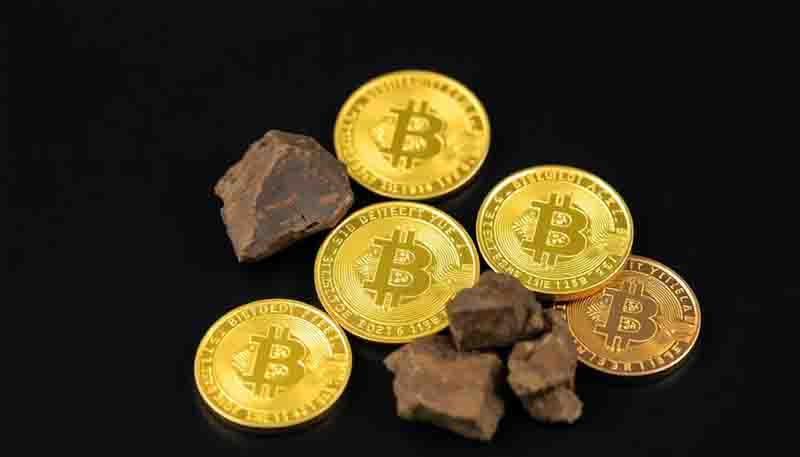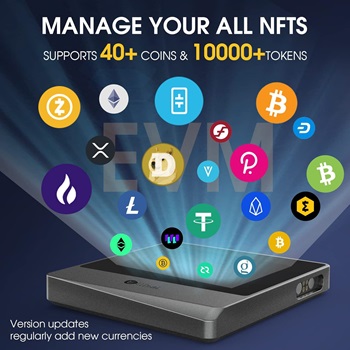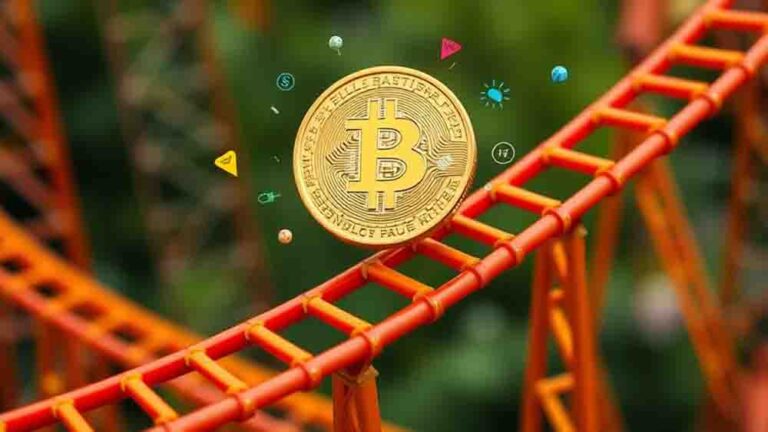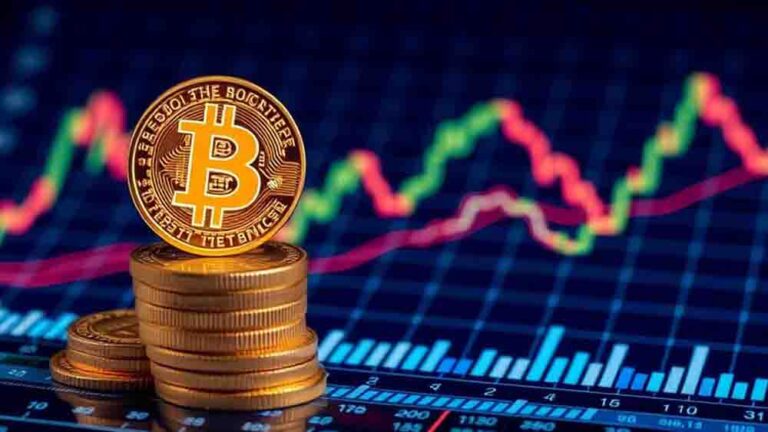Why Invest in Digital Coins or Precious Metal Mines?
Note: This post may contain affiliate links, and we may earn a commission (with No additional cost for you) if you purchase via our link. See our disclosure for more info. The gold and crypto world is constantly changing. This is not financial, investment, legal, or professional advice. So, please verify the information on the gold and cryptocurrency provider’s websites.
You've probably heard that investing in digital coins or precious metal mines could make you a millionaire overnight. While that's an exaggeration, these investment options do offer unique opportunities for portfolio diversification and potential growth. As you consider your financial future, you'll want to understand the pros and cons of these assets. Digital currencies are revolutionizing finance, while precious metals have stood the test of time. But which is right for you? The answer isn't simple, and it depends on various factors that could greatly impact your investment strategy. Let's explore why these assets might deserve a place in your portfolio.
Key Takeaways
- Digital coins offer substantial growth potential, with Bitcoin surging from $3,800 to over $75,000 between 2020 and 2024.
- Precious metals provide stability during economic uncertainty, as evidenced by gold's 40% price increase from 2019 to mid-2020.
- Combining digital coins and precious metals in a portfolio helps mitigate overall market volatility and spread risk.
- Technological advancements in blockchain and mining improve security, efficiency, and sustainability in both sectors.
- Increasing institutional interest and regulatory acceptance indicate long-term growth prospects for digital coins and precious metals.
Market Trends and Growth Potential
As we plunge into the market trends and growth potential of digital coins and precious metal mines, it's clear that both sectors are making waves in the investment world. The global cryptocurrency market's valuation of over $2.5 trillion in early 2021 highlights the significant growth potential for digital currencies. This surge in market value has caught the attention of institutional investors, who are increasingly adding these alternative investments to their portfolios.
Meanwhile, precious metals like gold and silver continue to shine as safe-haven assets. The demand for physical gold and other precious metals is expected to rise, driven by:
- Industrial applications in electronics and healthcare
- Investor interest in inflation hedges
- Historical reliability during economic downturns
The COVID-19 pandemic has further emphasized the importance of diversification in investment portfolios.
Bitcoin's meteoric rise from $3,800 in March 2020 to over $75,000 by March 2024 demonstrates the potential for substantial returns in digital currencies. Similarly, gold prices increased by nearly 40% from 2019 to mid-2020, reinforcing its status as a valuable asset during uncertain times.
Both sectors offer unique opportunities for growth and portfolio diversification, making them attractive options for investors seeking to capitalize on emerging market trends.
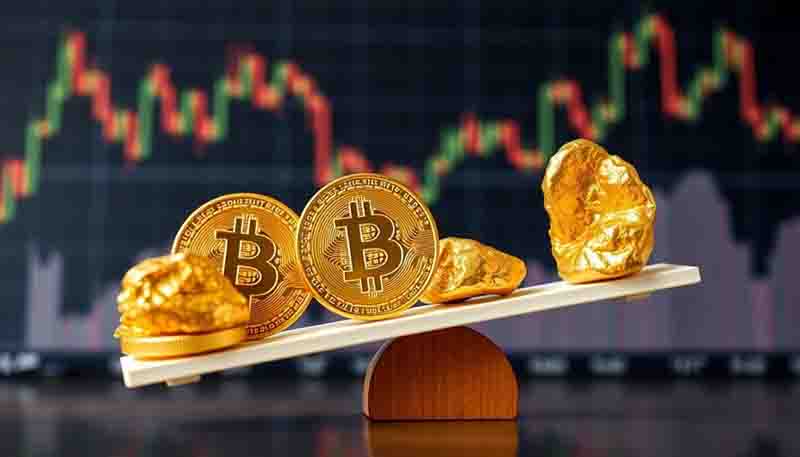
Balancing risk and reward, diversification stands as a cornerstone of successful investing. When considering your investment portfolio, combining digital coins and precious metals offers significant diversification benefits. This strategic pairing allows you to mitigate market volatility while potentially improving long-term returns.
Digital coins, known for their rapid growth potential, can provide substantial upside to your portfolio. However, they're often subject to high volatility. On the other hand, precious metals, particularly gold mining companies, tend to perform well during economic uncertainty. This counterbalance helps protect your investments during market downturns.
By investing in both asset classes, you're effectively spreading your risk across different sectors. Studies show that this approach can reduce overall portfolio risk while maintaining opportunities for growth. During economic downturns, gold prices typically rise, offsetting potential losses in other areas of your portfolio.
Consider these key benefits of diversification:
- Reduced downside risk
- Improved long-term returns
- Protection against market volatility
- Balanced exposure to growth and stability
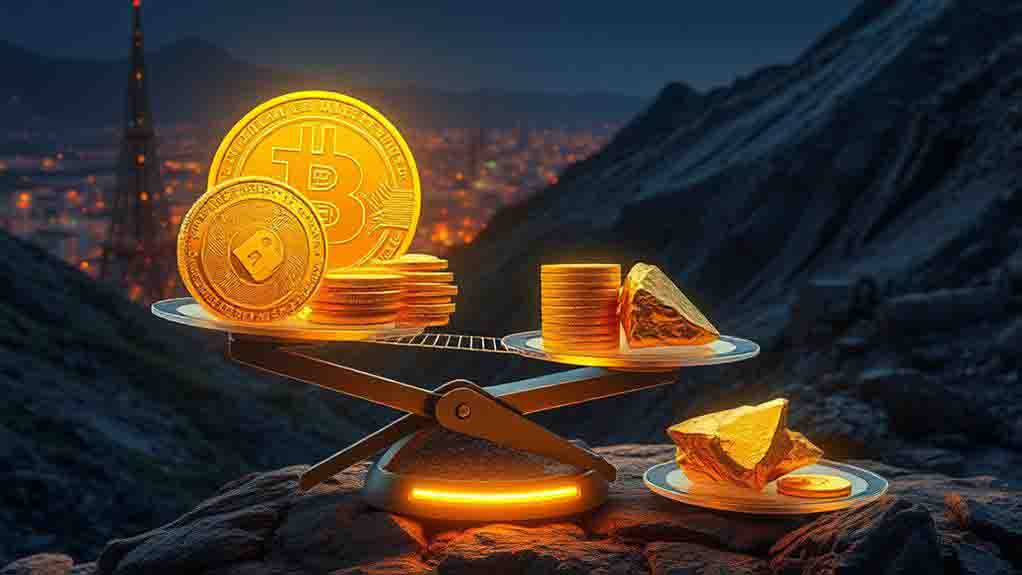
Technological Advancements
Technological advancements are reshaping the landscape of both digital coins and precious metal mining investments. These innovations are enhancing security, efficiency, and sustainability across both sectors, making them increasingly attractive to investors.
In the domain of digital coins, blockchain technology has revolutionized transactions by eliminating intermediaries and improving transparency. Decentralized finance platforms have expanded the utility of cryptocurrencies, offering new opportunities like lending and yield farming. Advanced algorithms are being developed to predict market trends, aiding in investment decisions.
For precious metal mining, technological advancements have greatly improved operations:
- Automated machinery and advanced geological mapping increase efficiency
- Reduced operational costs enhance profitability
- Integration of renewable energy sources addresses sustainability concerns
These innovations are transforming both industries, making them more appealing to investors seeking growth potential and environmental responsibility.
As technology continues to evolve, you can expect further improvements in security, efficiency, and sustainability for both digital coins and precious metal mining investments.
When considering these investment options, it's essential to stay informed about the latest technological developments and their potential impact on market trends and long-term value.
Risk and Volatility Analysis
When analyzing risk and volatility, you'll find stark differences between digital coins and precious metal mining investments. Bitcoin, a popular digital currency, has shown extreme price fluctuations, reaching nearly $69,000 in November 2021 before experiencing dramatic drops.
In contrast, gold, a traditional economic asset, has maintained a more stable value, rising from below $1,300 in early 2019 to almost $2,100 in mid-2020.
Investors considering these options should weigh the following factors:
- Bitcoin's limited supply of 21 million coins can lead to speculative volatility
- Gold's finite supply and industrial demand support its value retention
- Cryptocurrency market dynamics can cause abrupt price drops
- Gold typically offers easier liquidation without significant value loss
- Mining company investments add operational and regulatory risks
Your risk tolerance plays a vital role in choosing between digital coins and precious metals.
While Bitcoin's potential for high returns may attract some investors, its volatility can be unsettling for others. Gold's historical stability makes it a safer option during economic downturns.
Mining companies offer exposure to precious metals but come with additional risks related to operational costs and regulations.
Consider your investment goals and risk appetite when deciding between these options.
Regulatory Landscape and Future Outlook
The regulatory landscape for digital coins and precious metal mines is rapidly evolving, shaping the future of both investment sectors. As you consider investing in these assets, it's vital to understand how regulations impact market stability and potential returns.
Cryptocurrencies:
- Governments worldwide are developing legislation to address fraud, consumer protection, and taxation.
- The approval of Bitcoin ETFs signals increasing regulatory acceptance.
- Growing institutional investment may lead to improved market liquidity.
Precious Metals:
- Established regulations guarantee transparency and investor protection.
- The Commodity Futures Trading Commission oversees trading practices in the U.S.
Future Outlook:
- Digital coins show potential for growth due to rising institutional interest.
- Precious metals maintain their appeal as safe-haven assets for investment purposes.
While cryptocurrencies face a more uncertain regulatory environment, they offer the potential for high returns.
Precious metal mines, though subject to established regulations, provide stability and a hedge against economic uncertainty.
As you weigh your investment options, consider how evolving regulations may affect each sector's market stability and long-term prospects.
Stay informed about legislative developments to make well-informed decisions aligned with your investment goals and risk tolerance.
Frequently Asked Questions
What Is the Benefit of Digital Coin?
Digital coins offer numerous advantages for you as an investor. They provide decentralized finance potential, allowing direct peer-to-peer transactions without intermediaries.
Blockchain technology benefits include enhanced security and transparency. You can diversify your portfolio with digital currencies, potentially hedging against inflation.
While volatility risk management is vital, digital coins offer liquidity and global accessibility.
Future trends analysis suggests growing adoption, though regulatory impacts may shape the market.
Consider digital coins as part of your investment strategy, balancing potential returns with associated risks.
Is It Better to Invest in Gold or Cryptocurrency?
Like choosing between a sturdy oak or a fast-growing sapling, deciding between gold and cryptocurrency depends on your investment goals and risk tolerance.
Gold offers lower volatility and serves as a traditional inflation hedge, while cryptocurrencies present higher potential returns with greater security risks.
Consider market trends, technological adoption, and asset liquidity when diversifying your portfolio.
Gold's historical performance provides stability, but cryptocurrencies may offer future growth.
Evaluate your financial situation and risk appetite to determine the best investment strategy for you.
Is It Better to Invest in Stocks or Precious Metals?
When deciding between stocks and precious metals, you'll need to evaluate your investment goals and risk tolerance.
Stock market trends offer potential for higher returns, but come with greater volatility. Precious metals, like gold, provide an inflation hedge and stability during economic downturns.
To optimize your portfolio, contemplate investment diversification strategies that include both assets. Analyze historical performance, economic indicators, and market volatility impact to inform your decision.
Why Would People Invest in Precious Metals?
You might think investing in precious metals is as outdated as using a rotary phone, but you'd be wrong.
People invest in precious metals for several compelling reasons:
- Historical stability: Gold and silver have maintained value for centuries
- Inflation hedge: Precious metals often retain purchasing power during inflationary periods
- Tangible asset: Unlike stocks, you can hold physical gold or silver
- Diversification strategy: Metals typically have low correlation with traditional investments
- Safe haven: During market volatility, precious metals can provide stability
- Supply scarcity and global demand: Limited resources with consistent industrial use
Conclusion
You've explored the compelling reasons to invest in digital coins and precious metal mines. These assets offer unparalleled diversification benefits and growth potential in today's rapidly evolving financial landscape. While risks exist, technological advancements and increasing institutional interest are paving the way for a golden future. By balancing your portfolio with both digital and tangible assets, you're not just investing; you're future-proofing your wealth. Don't wait – the next financial revolution is already underway.

